
How to Use battery: Examples, Pinouts, and Specs
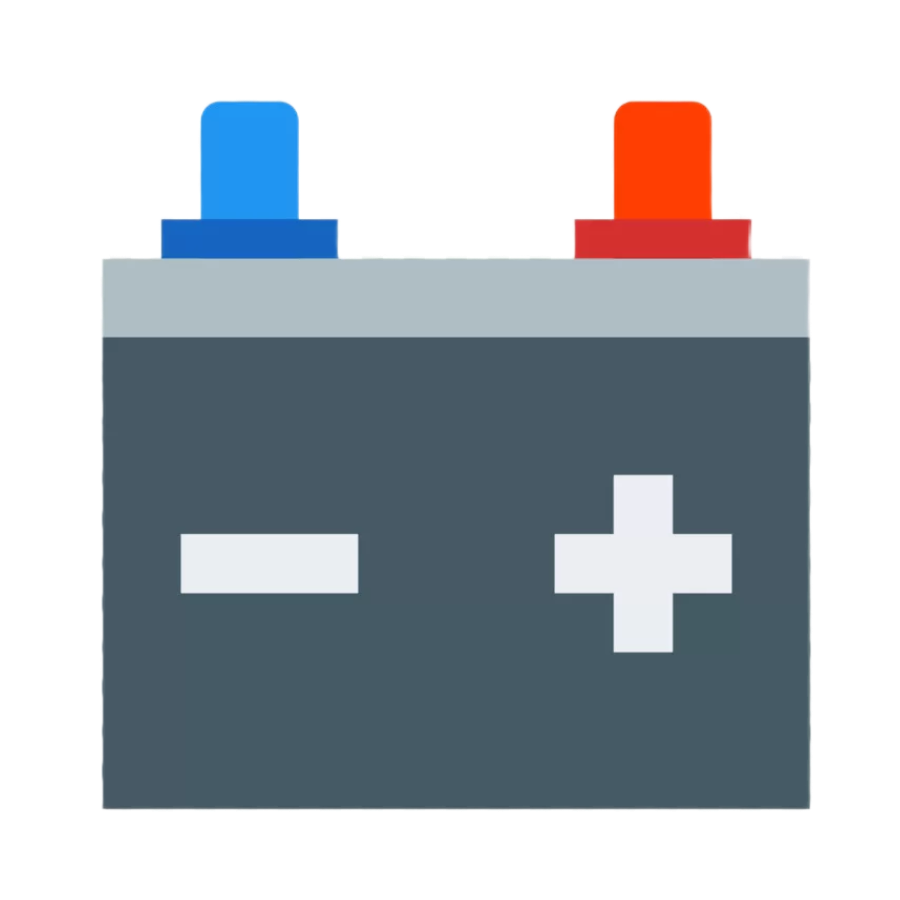
 Design with battery in Cirkit Designer
Design with battery in Cirkit DesignerIntroduction
A battery is a device that stores electrical energy in chemical form and converts it to electrical energy when needed, providing power to electronic circuits. Batteries are essential components in a wide range of applications, from small electronic devices like remote controls and smartphones to large systems such as electric vehicles and renewable energy storage.
Explore Projects Built with battery
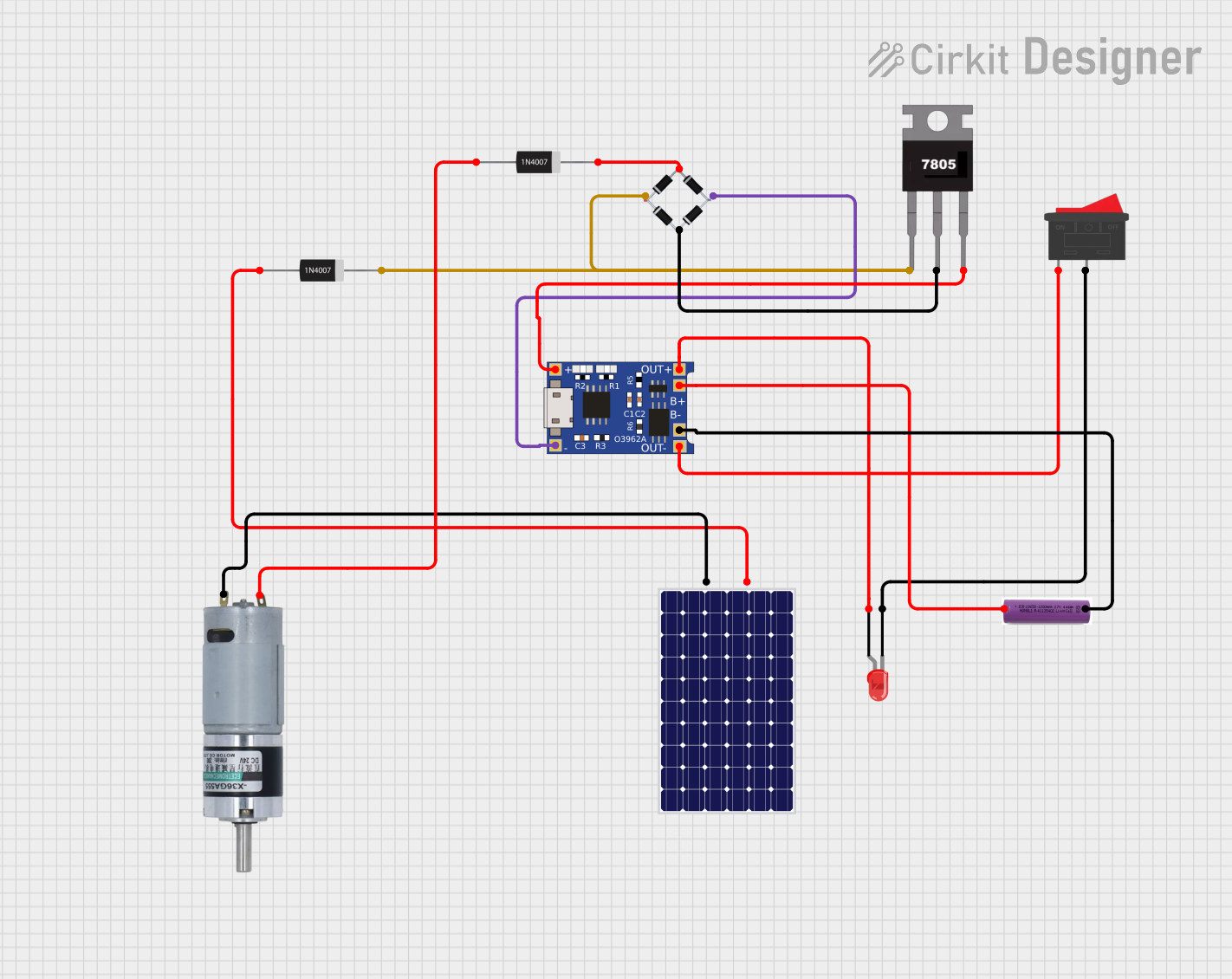
 Open Project in Cirkit Designer
Open Project in Cirkit Designer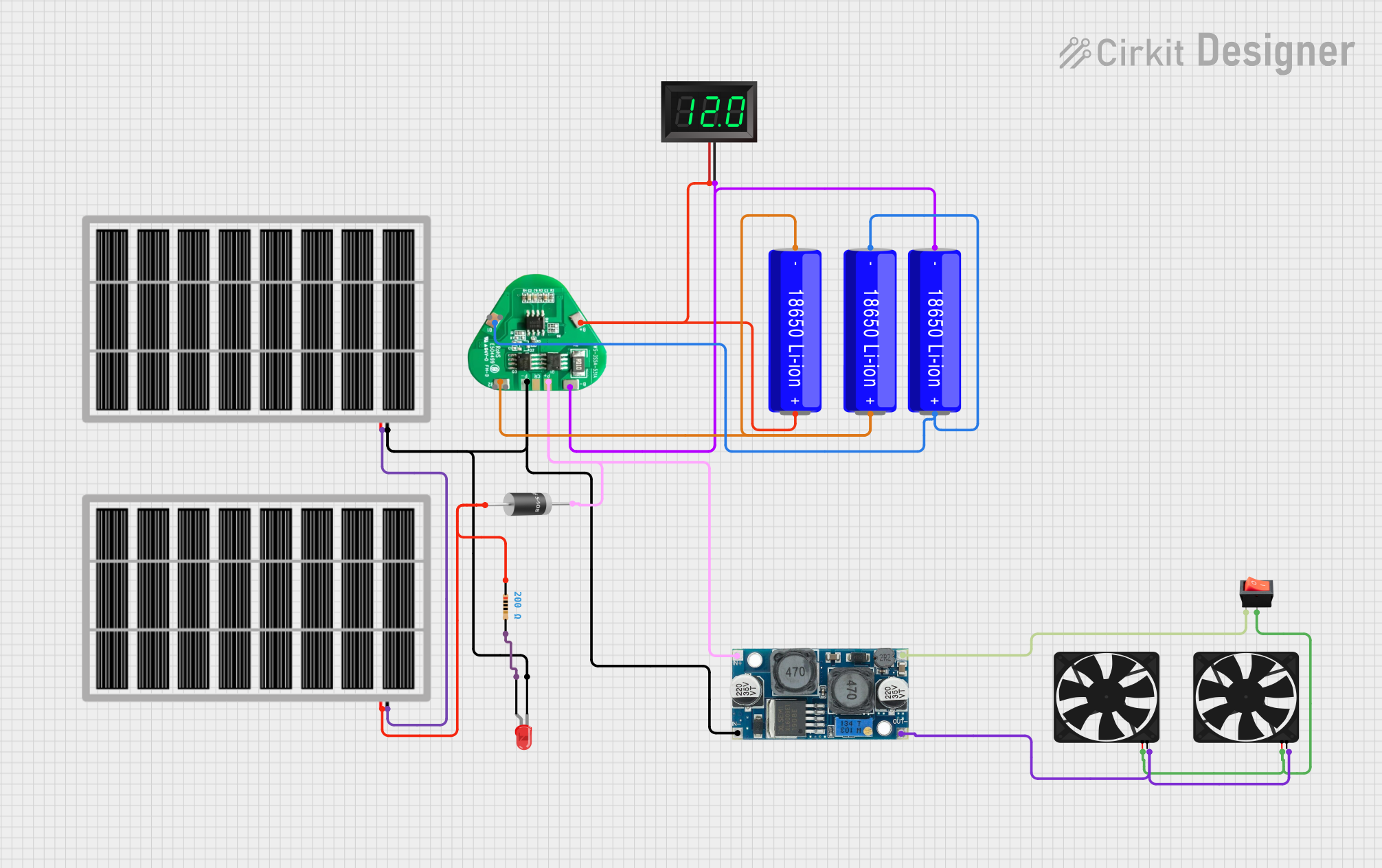
 Open Project in Cirkit Designer
Open Project in Cirkit Designer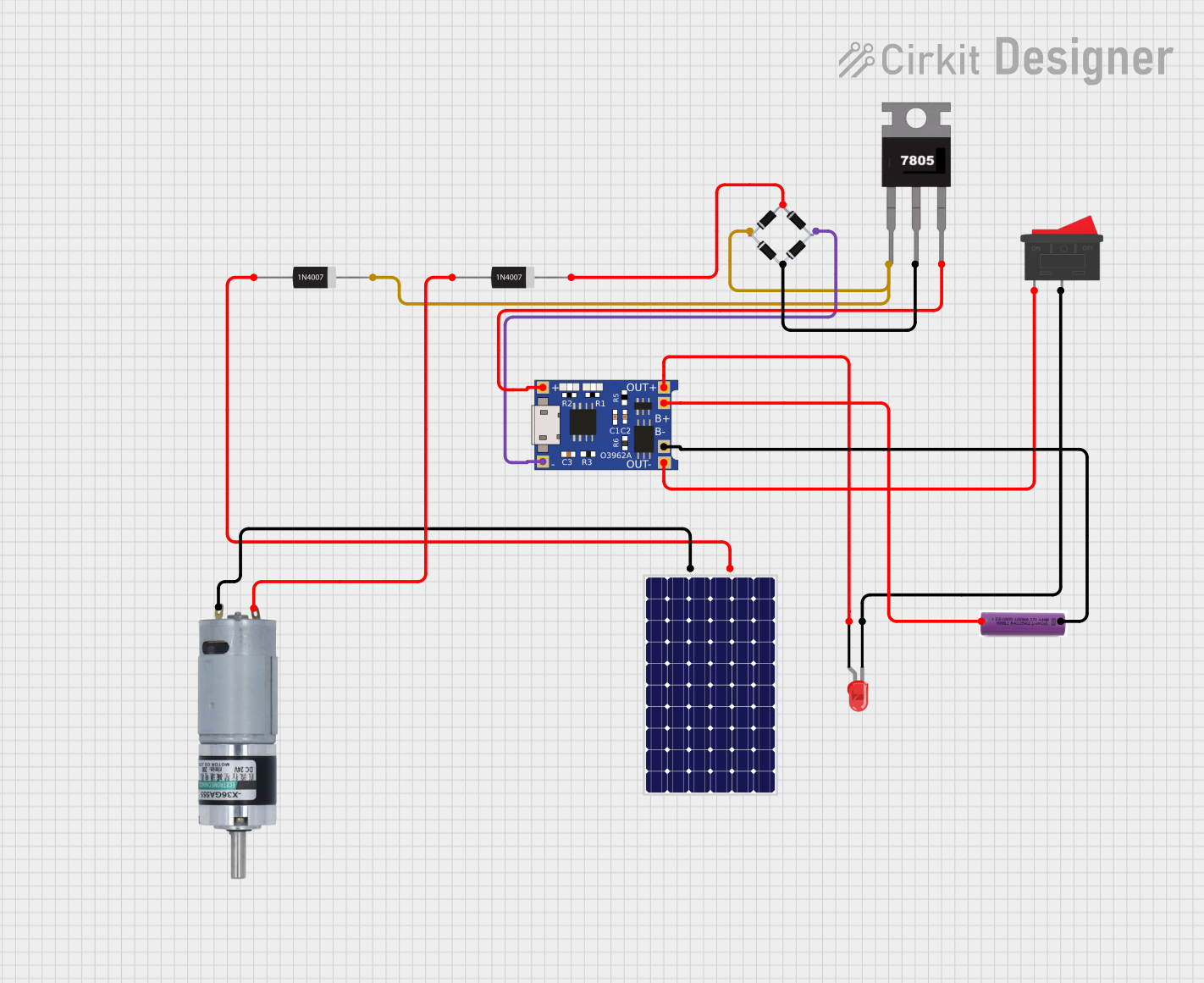
 Open Project in Cirkit Designer
Open Project in Cirkit Designer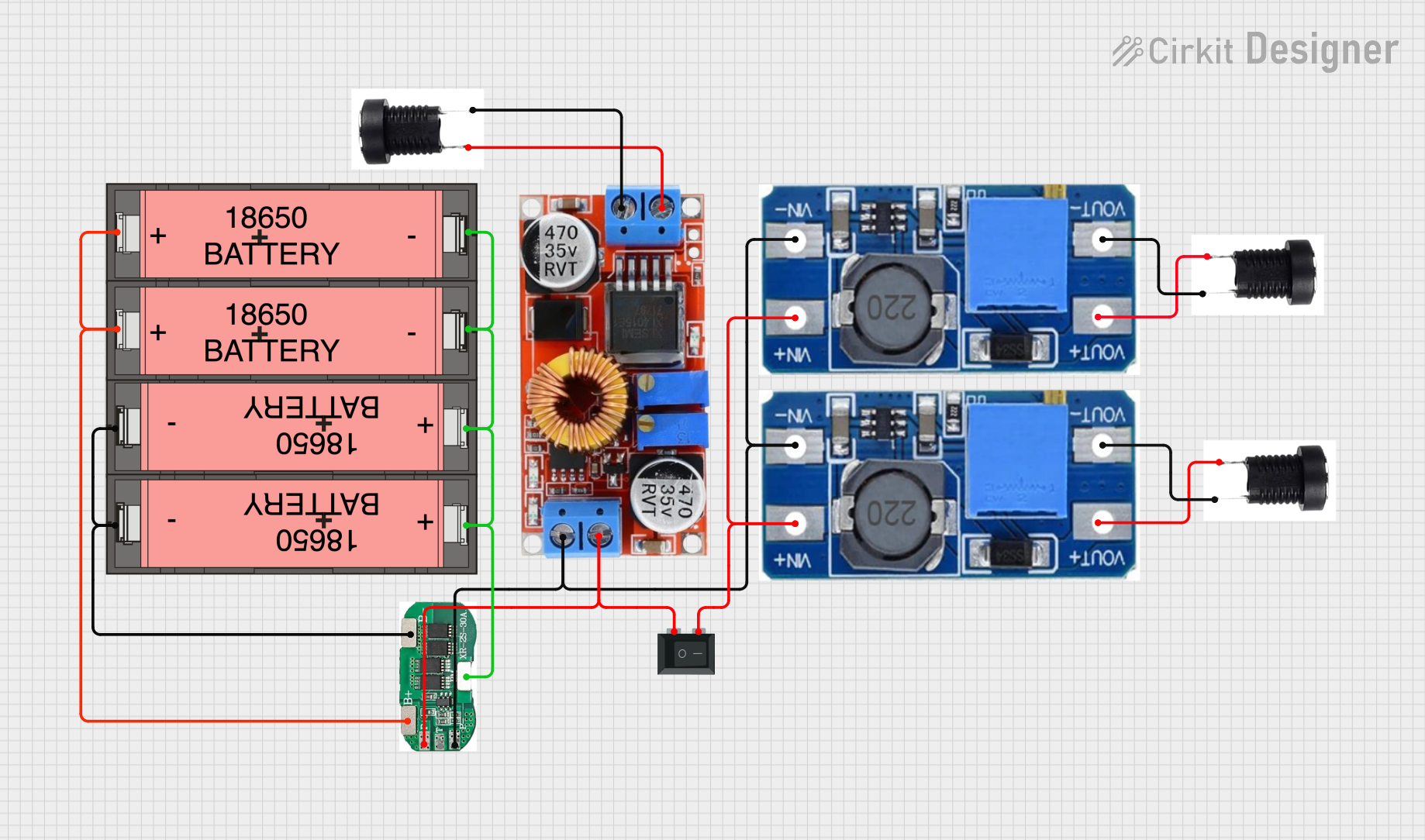
 Open Project in Cirkit Designer
Open Project in Cirkit DesignerExplore Projects Built with battery

 Open Project in Cirkit Designer
Open Project in Cirkit Designer
 Open Project in Cirkit Designer
Open Project in Cirkit Designer
 Open Project in Cirkit Designer
Open Project in Cirkit Designer
 Open Project in Cirkit Designer
Open Project in Cirkit DesignerCommon Applications and Use Cases
- Powering portable electronic devices (e.g., smartphones, laptops, cameras)
- Backup power for critical systems (e.g., uninterruptible power supplies)
- Energy storage in renewable energy systems (e.g., solar panels, wind turbines)
- Electric vehicles and transportation
- Wearable devices and IoT (Internet of Things) applications
Technical Specifications
Batteries come in various types, each with unique specifications. Below is an example of a common lithium-ion (Li-ion) battery's technical specifications:
| Parameter | Specification |
|---|---|
| Nominal Voltage | 3.7 V |
| Capacity | 2000 mAh (varies by model) |
| Maximum Discharge Rate | 2C (e.g., 4 A for a 2000 mAh battery) |
| Charging Voltage | 4.2 V (maximum) |
| Operating Temperature | -20°C to 60°C |
| Cycle Life | 300–500 cycles |
Pin Configuration and Descriptions
For rechargeable batteries with integrated protection circuits, the pin configuration is typically as follows:
| Pin | Name | Description |
|---|---|---|
| 1 | Positive (+) | Positive terminal of the battery |
| 2 | Negative (-) | Negative terminal of the battery |
| 3 | Thermistor (T) | Optional pin for temperature monitoring (if present) |
Usage Instructions
How to Use the Battery in a Circuit
- Determine Voltage and Capacity Requirements: Ensure the battery's voltage and capacity match the requirements of your circuit.
- Connect the Terminals Correctly: Always connect the positive terminal of the battery to the positive rail of the circuit and the negative terminal to the ground.
- Use a Battery Holder or Connector: For safety and convenience, use a battery holder or connector to secure the battery in place.
- Include a Protection Circuit: For rechargeable batteries, use a Battery Management System (BMS) to prevent overcharging, over-discharging, and short circuits.
- Charge Safely: Use a charger specifically designed for the battery type (e.g., Li-ion, NiMH).
Important Considerations and Best Practices
- Avoid Overcharging or Over-discharging: This can damage the battery and reduce its lifespan.
- Monitor Temperature: Batteries can overheat during charging or discharging. Use a thermistor or temperature sensor if necessary.
- Store Properly: Store batteries in a cool, dry place when not in use. Avoid exposing them to extreme temperatures.
- Dispose Responsibly: Follow local regulations for recycling or disposing of batteries to minimize environmental impact.
Example: Connecting a Battery to an Arduino UNO
Below is an example of powering an Arduino UNO using a 9V battery:
- Connect the positive terminal of the 9V battery to the Arduino's VIN pin.
- Connect the negative terminal of the battery to the Arduino's GND pin.
// Example code for Arduino UNO powered by a battery
// This code blinks an LED connected to pin 13
void setup() {
pinMode(13, OUTPUT); // Set pin 13 as an output
}
void loop() {
digitalWrite(13, HIGH); // Turn the LED on
delay(1000); // Wait for 1 second
digitalWrite(13, LOW); // Turn the LED off
delay(1000); // Wait for 1 second
}
Troubleshooting and FAQs
Common Issues Users Might Face
Battery Drains Too Quickly:
- Cause: High current draw from the circuit or a degraded battery.
- Solution: Check the circuit's power consumption and replace the battery if necessary.
Battery Overheats:
- Cause: Overcharging, short circuit, or high discharge rate.
- Solution: Use a proper charger and ensure the circuit's current draw is within the battery's limits.
Device Does Not Power On:
- Cause: Incorrect battery connection or insufficient voltage.
- Solution: Verify the battery's voltage and ensure correct polarity.
Battery Swells or Leaks:
- Cause: Overcharging, physical damage, or end of life.
- Solution: Stop using the battery immediately and dispose of it safely.
Solutions and Tips for Troubleshooting
- Use a multimeter to measure the battery's voltage and ensure it is within the expected range.
- Inspect the battery terminals for corrosion or damage.
- If using a rechargeable battery, ensure the charger is functioning correctly and compatible with the battery type.
- For circuits with high power demands, consider using a battery with a higher capacity or adding a capacitor for stability.